ADA Signs
âADA Signsâ are required in the US as a result of the Americans with Disabilities Act, or ADA, but a lot of people think that the term âADA Signsâ is synonymous with Braille Signs, which is not the case. ADA signs have certain specifications and guidelines that ensure the signs will be visible and helpful to people with different disabilities (especially vision). Braille and raised letters are only part of the requirements, though the most visible ones, set up by the ADA Accessibility Guidelines, or ADAAG.
The ADA Guidelines are changing periodically but the principles are the same: almost every sign that would be considered an "architectural" sign must comply with one or another of the ADA Guidelines. In other words, if a sign identifies a permanent room or space of a facility, including exits, directs or informs about functional spaces of the facility, or identifies, directs to, or informs about accessible features of the facility, it must comply. Signs for advertising and marketing purposes, temporary signs, company logos and names are examples of signs or sections of signs that do not have to comply.
|
||||||||||
|---|---|---|---|---|---|---|---|---|---|---|
The complete guidelines are delineated on the website of the United States Access Board and can be viewed at http://www.access-board.gov/. The actual standards for the signs (and most other standards used in ADA regulations and state building codes), are actually the product of the ANSI (American National Standards Institute) A117.1 Committee. This large committee is made up of a balanced group of representatives from industry, the government, disability organizations, designers, code officials, and experts. It meets in 5 year cycles to revise the last published standard. The standard is then used by the International Code Council for its model building code, and has formed the basis of the new version of the ADA Guidelines, now called the 2004 ADA/ABA and available on the website of the Access Board at http://www.access-board.gov/. The new proposal is not approved yet, but several federal agencies already adopted them. Here are some of the points, described in simpler language (for the exact wording review the website mentioned):
|
||||||||||
Click here For a more complete description of ADAAG Guidelines
The following sign frames have an option of ADA lens. They can also be used with non-ADA lens, which is the default. After choosing the frame size, you will be able to change the lens to ADA lens (with raised letters and Grade 2 Braille). You will be contacted to determine the content, font and color.
|
||||||||||
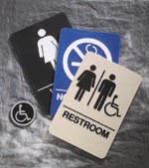
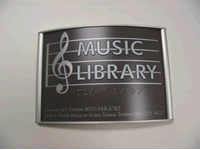

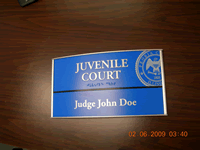
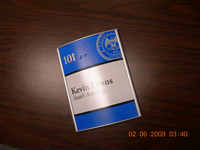
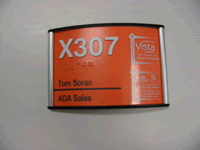
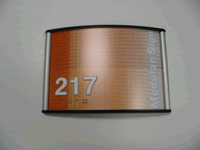
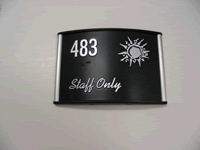
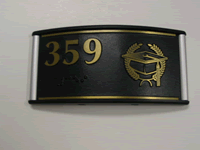
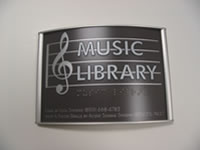
 Special
Special


